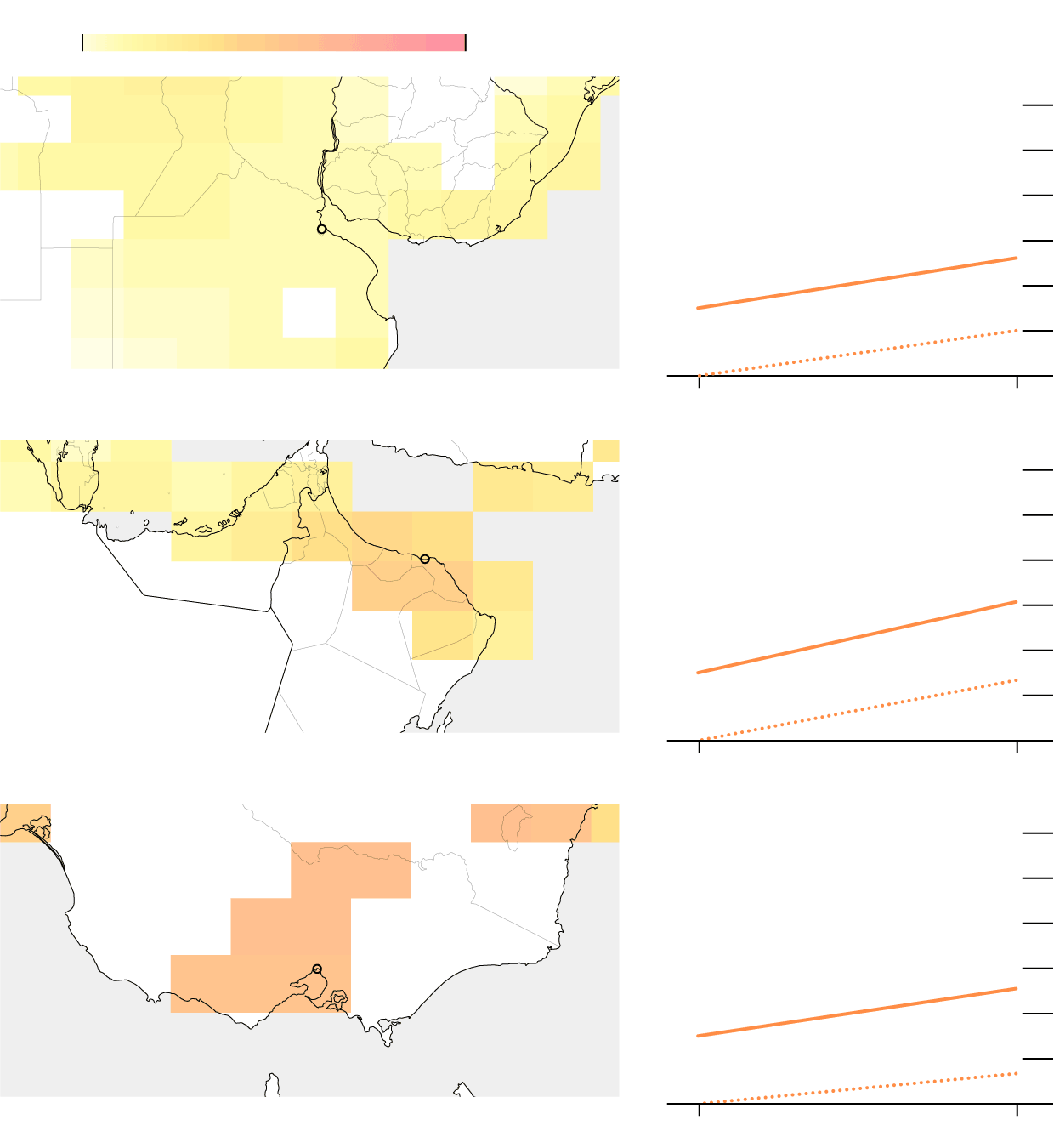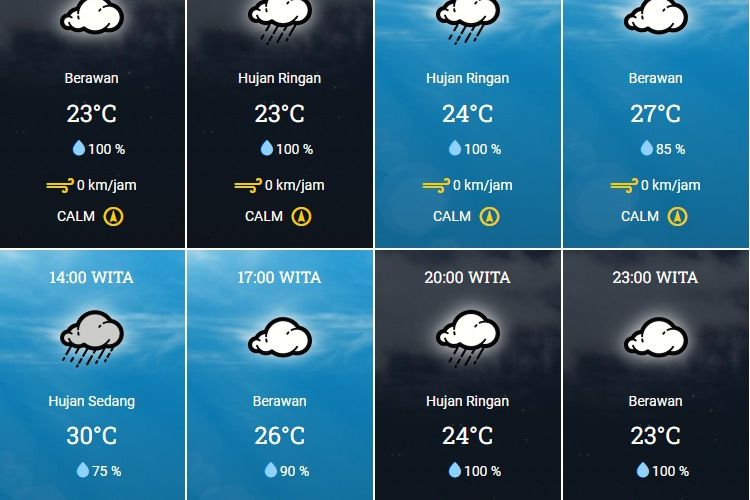Global Cities Confront The Growing Threat Of Climate Whiplash

Table of Contents
Climate whiplash differs significantly from the gradual, predictable changes associated with traditional climate change models. Instead of a slow, steady increase in temperature or sea levels, climate whiplash involves abrupt and unpredictable shifts between extreme weather events. This volatility makes it exceptionally challenging for cities to adapt and plan effectively, demanding innovative and robust strategies for mitigation and resilience. This article aims to delve into these challenges and propose solutions for building a more resilient urban future.
The Impacts of Climate Whiplash on Urban Infrastructure
Urban infrastructure, the backbone of any city, is highly vulnerable to the erratic weather patterns associated with climate whiplash. Roads buckle under extreme heat, then are washed away by sudden flash floods. Power grids fail during heatwaves, leaving millions without electricity, only to be further stressed by subsequent storms. Water systems struggle to cope with both prolonged drought and intense rainfall. These rapid shifts in weather patterns are causing significant damage and disruptions.
Examples of this damage are plentiful. The 2021 heatwave in the Pacific Northwest caused widespread power outages, highlighting the vulnerability of aging infrastructure to extreme heat. Similarly, many cities have experienced severe flooding after periods of intense drought, exposing weaknesses in drainage systems and highlighting the need for robust stormwater management.
- Increased repair and maintenance costs: The constant cycle of damage and repair places a significant strain on municipal budgets.
- Disruptions to essential services: Power outages, water shortages, and transportation breakdowns cripple daily life and impact the economy.
- Risk of cascading failures: Damage to one system (e.g., power grid) can trigger failures in others (e.g., water pumps), leading to widespread disruption.
- Need for climate-resilient infrastructure design and upgrades: Cities must invest in infrastructure designed to withstand extreme weather events, including improved drainage systems, strengthened power grids, and more resilient building materials. This requires significant investment in climate resilient infrastructure.
Public Health Challenges Posed by Climate Whiplash
The rapid shifts in temperature and weather patterns associated with climate whiplash pose significant threats to public health. Extreme heatwaves lead to heat stress, increasing hospital admissions and mortality rates, particularly among vulnerable populations. Conversely, heavy rainfall and flooding can create breeding grounds for infectious diseases, spreading illnesses like cholera and typhoid fever. The unpredictable nature of these events also impacts mental health, leading to stress, anxiety, and trauma.
- Increased hospital admissions and mortality rates: Heat-related illnesses and infectious diseases put a strain on healthcare systems.
- Strain on healthcare systems: The sudden influx of patients during and after extreme weather events overwhelms resources and capacity.
- Vulnerability of marginalized communities: Low-income neighborhoods and communities of color often lack access to resources and support, making them disproportionately vulnerable.
- Need for early warning systems and public health interventions: Effective public health measures, including early warning systems and community preparedness programs, are crucial to mitigate the risks.
Socioeconomic Disruptions Caused by Climate Whiplash
Climate whiplash has profound socioeconomic consequences. Businesses suffer damage to property and disruption to supply chains. Employment in affected sectors plummets, leading to job losses and increased economic inequality. Displacement and migration can also occur as people are forced to leave their homes due to damage or unlivable conditions. This can exacerbate existing social inequalities and lead to social unrest.
- Damage to businesses and supply chains: Disruptions in transportation and infrastructure cripple commerce and trade.
- Job losses in affected sectors: Industries like agriculture, tourism, and construction are particularly susceptible to extreme weather.
- Increased inequality and social unrest: The unequal impact of climate whiplash exacerbates existing social disparities.
- Need for economic diversification and social safety nets: Cities need to develop strategies to diversify their economies and provide social support for vulnerable populations.
Strategies for Building Urban Resilience to Climate Whiplash
Building urban resilience to climate whiplash requires a multifaceted approach combining adaptation and mitigation strategies. Integrated urban planning is key, prioritizing green infrastructure and sustainable urban development. Investing in climate-resilient infrastructure is paramount, while enhancing early warning systems for extreme weather events allows for timely evacuation and response. Improving urban green spaces helps mitigate the urban heat island effect, reducing the impact of heatwaves. Promoting sustainable transportation and energy systems also reduces the carbon footprint of cities. Finally, strengthening community resilience and preparedness through education and community engagement is crucial for effective disaster response.
- Investing in climate-resilient infrastructure: Upgrading infrastructure to withstand extreme weather events is crucial for long-term resilience.
- Implementing early warning systems for extreme weather: These systems provide crucial time for preparation and response.
- Improving urban green spaces: Green spaces help mitigate the urban heat island effect and absorb stormwater.
- Promoting sustainable transportation and energy systems: Reducing greenhouse gas emissions is crucial for mitigating future climate impacts.
- Strengthening community resilience and preparedness: Engaging communities in disaster preparedness helps ensure effective response and recovery.
Conclusion: Addressing the Threat of Climate Whiplash in Global Cities
Climate whiplash presents a significant and multifaceted threat to global cities, impacting infrastructure, public health, and socioeconomic stability. The unpredictable nature of these extreme weather events demands proactive adaptation and mitigation strategies. Cities must invest in climate-resilient infrastructure, implement early warning systems, and engage communities in preparedness efforts. Sustainable urban planning and green infrastructure are crucial for building a more resilient urban future.
By understanding and addressing the threat of climate whiplash, we can build more sustainable and resilient global cities for the future. Learn more about climate whiplash and its impact on your city. Contact your local officials, support organizations working on climate resilience, and advocate for climate-resilient urban planning and policies. Take action to protect your community and build a more sustainable future for all. Only through concerted climate action and sustainable urban development can we safeguard our global cities from the devastating impacts of climate whiplash.

Featured Posts
-
 Prakiraan Cuaca Akurat Kalimantan Timur Ikn Balikpapan Samarinda
May 28, 2025
Prakiraan Cuaca Akurat Kalimantan Timur Ikn Balikpapan Samarinda
May 28, 2025 -
 Jennifer Lopez 2025 American Music Awards Host
May 28, 2025
Jennifer Lopez 2025 American Music Awards Host
May 28, 2025 -
 Analyzing The Seattle Mariners Future Lineup Projections For 2025 And 2026 Post Raleigh Extension
May 28, 2025
Analyzing The Seattle Mariners Future Lineup Projections For 2025 And 2026 Post Raleigh Extension
May 28, 2025 -
 Ven Man Bi Mat Kho Bau 13 Trieu Usd Chuyen Chua Ke Ve Hai Tac Rau Den
May 28, 2025
Ven Man Bi Mat Kho Bau 13 Trieu Usd Chuyen Chua Ke Ve Hai Tac Rau Den
May 28, 2025 -
 Los Angeles Angels Shut Out By Miami Marlins Offensive Woes Persist
May 28, 2025
Los Angeles Angels Shut Out By Miami Marlins Offensive Woes Persist
May 28, 2025
